North Carolina has a huge variety of rocks and minerals that can be found by the avid rockhound. There’s far more than meets the eye here, with some great gems existing in different locations spread across the state. For the seeker, it’s just a matter of knowing what’s there and where to find it during their trips.
So, let’s get down to it with a list of the rocks, minerals, and gemstones found in North Carolina along with some tips on where to look!
Rocks, Minerals, and Gemstones Found in North Carolina
1. Feldspar
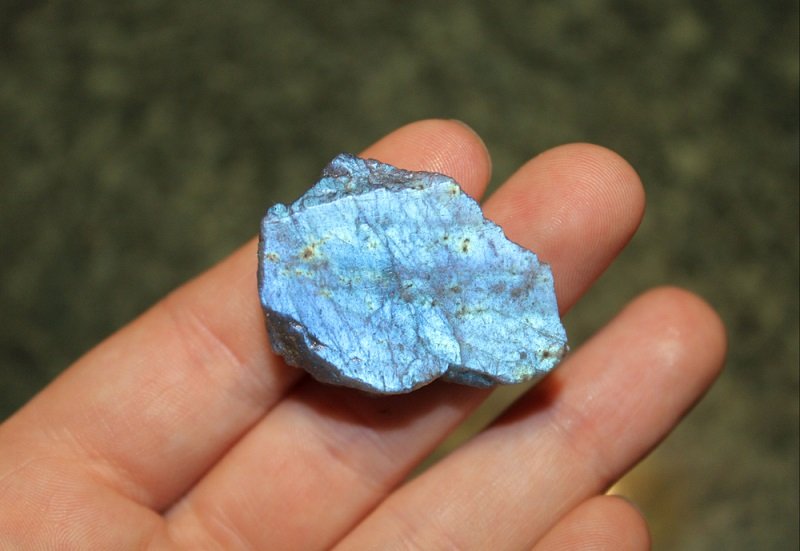
Feldspar is one of those minerals that’s found just about everywhere. It’s one of the big constituents of igneous rocks like granite, and large crystals of it are occasionally found. For the most part, however, feldspar finds use in industry. The alumina contained in feldspar makes it handy as an additive for glass and ceramics, as well as being used as a filler in some other applications.
Feldspar comes in many forms. The most popular versions for collectors are labradorite and its clear twin rainbow moonstone. Classic moonstone is also a feldspar mineral, as well as a few other collectibles. That’s not the type of feldspar found in North Carolina, instead it’s usually the type useful for industry.
North Carolina is a world-leading producer of feldspar. The areas rich in this mineral are also rich in several others and feldspar was routinely discarded for quite some time. It’s use is relatively recent, especially compared to the ancient industrial uses of some minerals.
If you’re looking for a sample, the best area in North Carolina would be in the Spruce Pine Mining District. This area produces a ton of feldspar in addition to mica, kaolin, and high-quality quartz.
2. Beryl (Emerald)

Beryl is a family of gemstones, and it contains the well-known gems aquamarine and emerald. It forms as an octagonal crystal and is rarely terminated, and has a high hardness of 8.0 on the Moh’s scale. Beryl is well known, even when people don’t know it’s beryl. The gems morganite, bixbite, heliodor, and a few others are also in this family.
Emerald itself takes coloration from either chromium or vanadium depending on its location. They’re known to be filled with inclusions, which are part of the charm of the stone. The inclusions in an emerald are referred to as the stone’s Jardin, or garden. Even world-class emeralds are rarely eye-clean. A high-clarity emerald at any kind of sane price is most likely synthetic.
North Carolina produces true emeralds, not just light green beryl. While not all of them are gem grade, it’s a great place to find them. Beryl is spread across the state in fairly large amounts, most often found in pegmatites. Pegmatites are rocks that are extremely coarse-grained, looking more like a mass of crystals fused together than the usual granite or gneiss.
Carolina hosts the world’s only paid dig emerald mine. If you’re looking for going out on your own look into mines and quarries in Alexander County. There are a lot of locations for beryl in the state, it’s just a matter of finding one that works for you.
3. Quartz/Amethyst
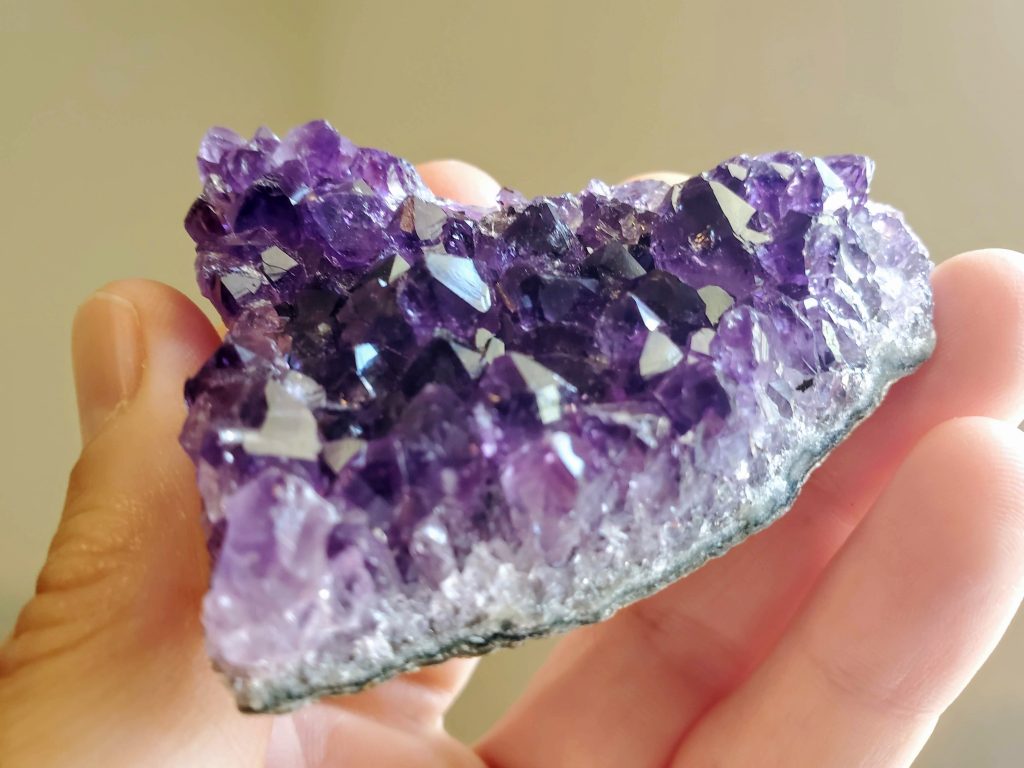
Quartz is the macrocrystalline form of silica, meaning that the crystal structure is visible to the naked eye. We all know what they look like: six-sided points with pyramidal termination. It’s the iconic crystal, and its form is often taken and given a different color to represent crystals in art and animation.
Amethyst is also a quartz crystal, just with purple coloration. While debated a bit, the color appears to come from iron trapped in the color centers of the crystal. With heat, pressure, and an amount of time best described as geological the iron impurities in the silica-laden gel that becomes quartz is trapped, creating a timeless purple crystal.
Both occur in North Carolina. While amethyst is of primary interest to collectors, the quartz has its own tale. North Carolina is a prime source of extremely pure quartz, which is used in the manufacture of microchips. It’s a vital part of the industry that makes our current lifestyle possible.
This quartz is mined in the Spruce Pine Mining District, but it can be found across the state. The amethyst is concentrated in a band across the middle of the state, with the best and most numerous samples coming out of Lincoln County and Iredell County.
4. Hiddenite
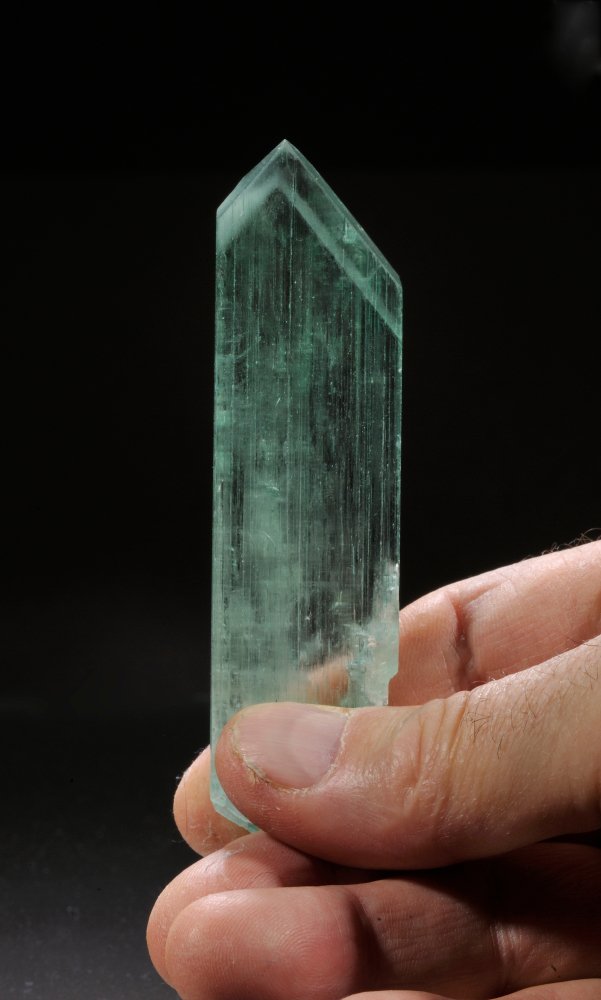
Hiddenite is a variant of spodumene that’s colored by chrome. The chrome gives this stone a great green color. Spodumene is one of the main minerals used to extract lithium, which is an essential ingredient for modern life. Hiddenite is one of a series of gemstones that come from this family, the others being kunzite and triphane. Kunzite is a purple version of the stone while triphane is the name used for yellow variants.
Not all green spodumene is actually hiddenite. Hiddenite is actually an emerald green, a rare shade indeed. Other green spodumenes have been recovered with lighter colors that appear to have been colored by impurities of minerals other than chromium.
Hiddenite was originally discovered in North Carolina, but small deposits have been found elsewhere. The site where it was originally found was bad for agriculture but the clay-based soil was found to host emeralds and hiddenite as did the granitic pegmatite base rock after the clay was dug out.
If you’re looking for Hiddenite, there’s just one place to check: the area around the town of Hiddenite. There are mines and quarries here but be careful where you go, hiddenite is worth quite a bit of money and you should always make sure you have permission before you head out if it’s not on public land.
5. Rhodolite Garnet
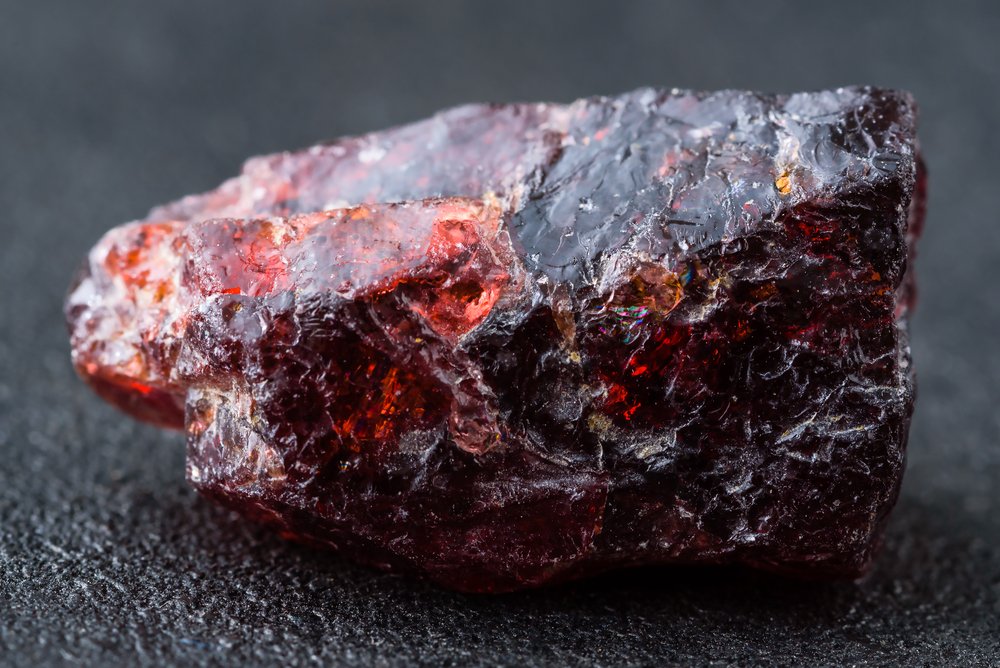
If you’ve been following our page you know I’m a big fan of garnets. Rhodolite garnet is among my favorites, showing a strange purple-red that’s not seen anywhere else. It’s actually a variety of pyrope garnet, and it was first discovered in North Carolina. It appears that trace amounts of manganese, chromium, and vanadium are responsible for the range of purples that this gemstone possesses.
Rhodolite garnets are often inclusion free. Garnet collectors know that the vast, vast majority of crystals aren’t suitable for use due to the incredible amount of inclusions. Many of the crystals I’ve had have been almost black due to included minerals and internal fractures. This has given them a good reputation in the gem industry, and rhodolites cut into facets are almost universally eye-clean.
North Carolina is the first place they were described, so the state naturally possesses some great deposits. Please note that rhodolite is a trade name, and not the proper mineralogical name of these stones. As far as geologists are concerned they’re another variety of pyrope garnet, the trace inclusions only of interest in determining their origin.
Rhodolite can be found in Macon County and Burke County.
6. Corundum (Ruby/Sapphire)
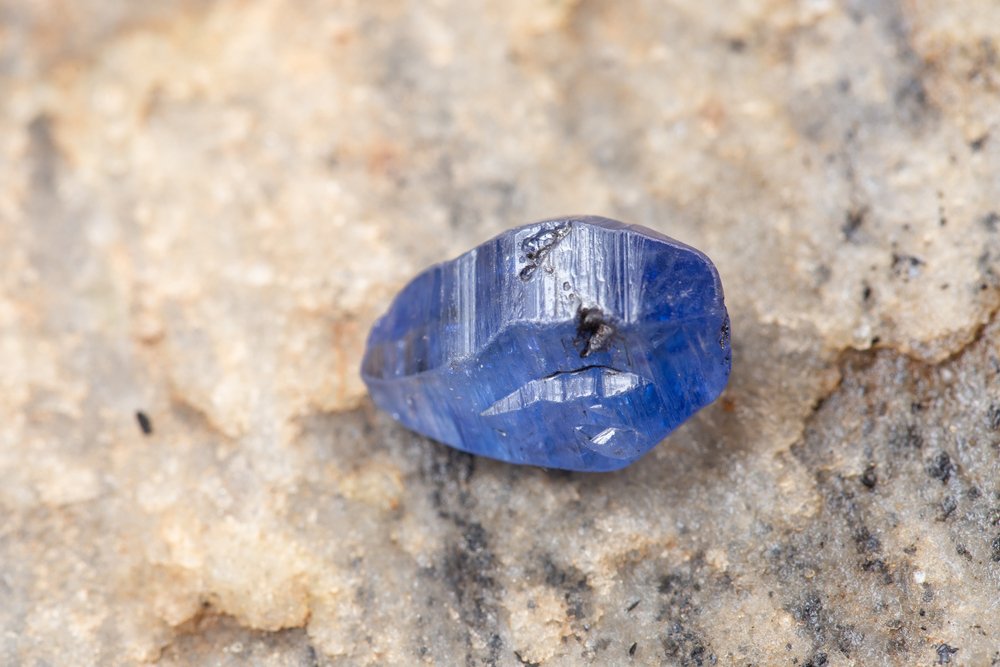
Corundum is the mineral family which contains rubies and sapphires. Sapphire is also the term used for all gem-quality corundum that isn’t red. Corundum is incredibly hard, at 9.0 on the Moh’s scale, scratchable only by diamond. These gemstones have been prized since antiquity and are some of the most valuable gemstones available today.
Corundum also has a more mundane use due to its high hardness. It’s considered a great abrasive since it can be used to work on most materials. When it comes to commonly encountered materials a corundum abrasive will work, making it a staple in that industry. It might seem a bit odd to think that your sandpaper is covered in bits of sapphire, but that’s often the case.
Corundum is often of poor quality. Many states contain considerable amounts but there is very little gem-grade material available. That’s not the case in North Carolina, where gemstones have been pulled from the earth with colors rivaling the best Burmese rubies. Sapphire can also be found here, in a variety of colors but without the same range as Montana.
Rubies are valuable, which means finding a place to look can be a bit hard. You’ll have to do a study of who owns which bit of land and where claims are in the area, but the best place to start looking is Southwest of Sylvia and Webster.
7. Topaz
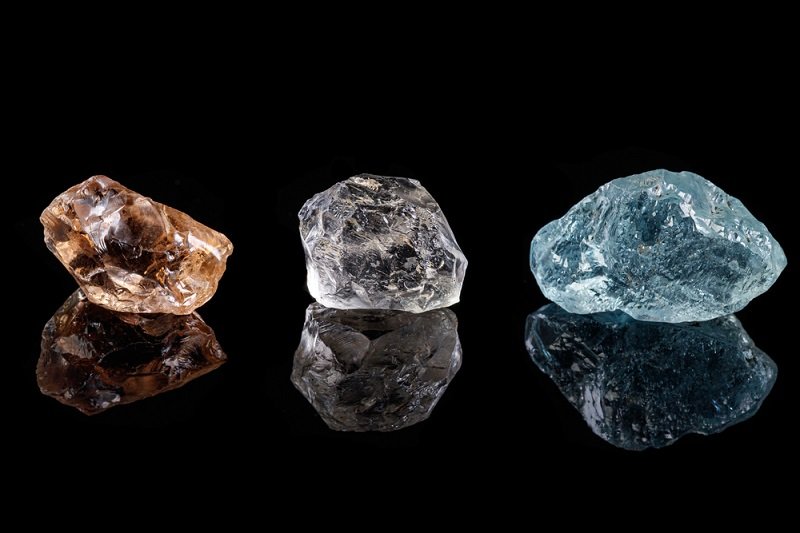
Topaz is another family of gemstones found in North Carolina. Topaz is a bit of a strange gem, especially when you consider how it has changed its dominant color over time. Well… the stones didn’t but a few decades ago saying topaz meant brown-yellow topaz instead of the soft blue pictured today.
Topaz is frequently a treated stone. Most often it’s irradiated, which produces a blue color in clear topaz. In some cases it’s an almost electric blue, such as Swiss blue topaz, in others it becomes a darker hue more associated with stormy skies like London blue topaz. In any case, 90%+ of the topaz market is irradiated. There’s also the metal-coated mystic topaz to take into account.
The topaz from North Carolina is generally well-formed and clear. The neat thing is that some of it can actually have rutile inclusions which create a series of golden “hairs” inside the stone. Topaz is a brilliant stone when cut, and with rutile inclusions, it can seem very fancy.
Topaz is always a bit of a bear to find, no matter the location. In North Carolina, your best bet is in Orange County near the Hillsborough District.
8. Columbite
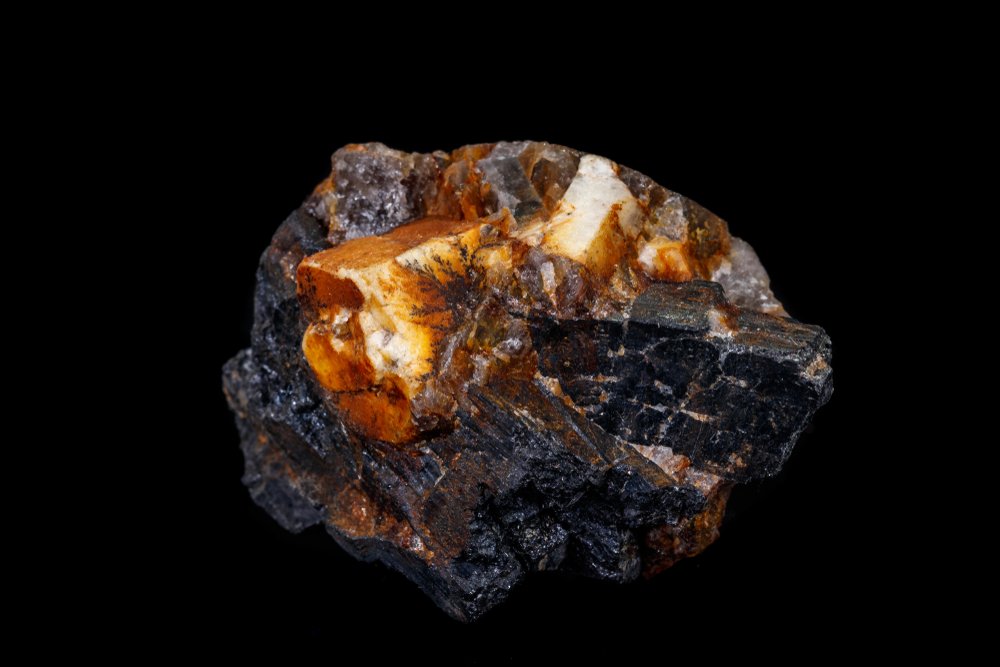
Columbite is a strange mineral. It’s primarily used as an ore of niobium, an important metal for exotic alloys. It can also contain a wide variety of other rare and strange minerals, including uranium and thorium depending on the location. It presents as a black, crystalline material that is often massive. Large single crystals are also found.
The name derives from columbarium, which was the name for niobium when it was first discovered. The name was later changed officially, in 1949. It appears to have been a compromise since at that same conference tungsten acquired its official name. It’s first commercial application was actually as light bulb filaments, having previously been a curiosity for chemists and not doing much else.
Niobium is a transition metal, like titanium and aluminum. That said, its actual properties have made it invaluable in the modern world. It’s used in high-tech alloys, and experiments with superconductors. It’s also used to make decorative objects since it can be anodized to a precise color using precise voltage control.
Columbite is found in Yancey County in North Carolina, which is where you want to begin your search.
9. Malachite
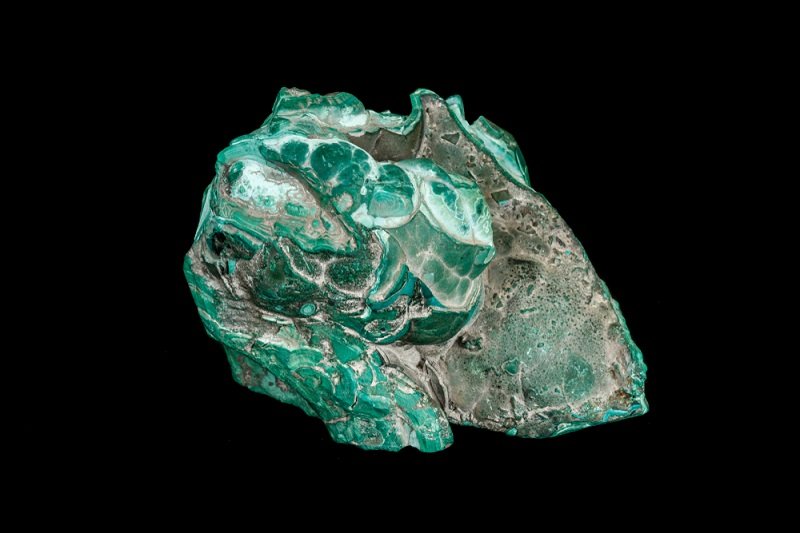
Malachite is a copper-based mineral that forms into brilliant green patterns. It’s been a favorite of collectors for a long time, and it was also a primary ore of copper in the past. Malachite is a copper carbonate mineral, and it’s often found intermixed with azurite. These days it’s mostly used as a gemstone, but malachite’s history is a bit different.
Malachite’s copper can be extracted by heating it to the right temperature. Many ores require some level of secondary processing before the metal can be extracted, which made malachite the favored ore where it was available. It’s use is very minor these days, as malachite is actually a poor ore when stone weight and volume is compared to the final yield.
Malachite commonly occurs across the state of North Carolina. Here it’s usually found in smaller pieces with botryoidal forms. It can also be found as crystals filling in vugs in the bedrock depending on the area. Malachite is one of the few minerals apart from quartz that regularly forms a druse layer, which is a secondary formation of crystals on top of the first that creates a sparkling appearance.
Malachite is found in quite a few places, but your best bet is to check out Granville County. Anywhere with copper mines is also likely to have some around, just be aware of the laws and where you’re going.
- Online rock and mineral club for collectors of all levels!
- Find community with like-minded rock and mineral enthusiasts.
- Monthly Giveaways!
- Free Access to Entire Digital Library of Products (annual memberships)


